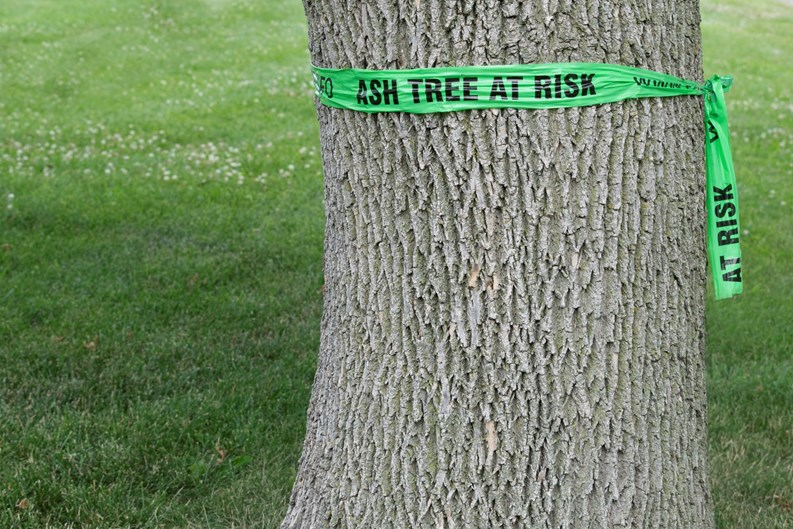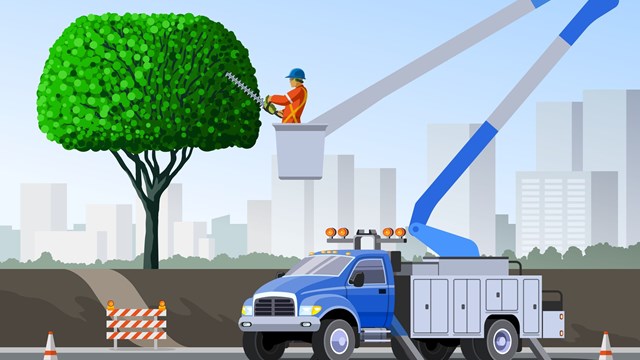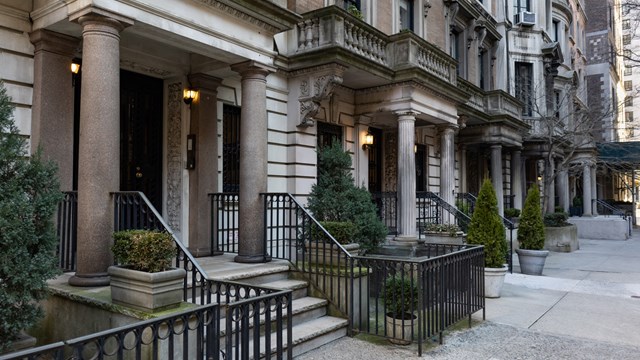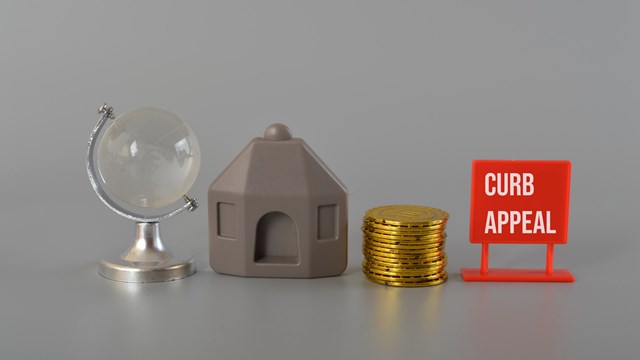Second of a two-part article.
Trees have their own natural enemies, but perhaps the most devastating for co-op, condo and HOA communities are invasive species of insects like the emerald ash borer (EAB).
Originating in Asia, this predator of ash trees is now present in 27 states, including New York and New Jersey. Metallic-green in color and measuring just a half-inch long and one-eighth wide, the emerald ash borer is responsible for the death of tens of millions of ash trees in Michigan, where it was first discovered in 2002, and hundreds of millions of trees in the affected parts of the U.S and Canada. The U.S. Forest Service says that the cost for treating, removing and replacing infected ash trees is estimated to be $10.7 billion. Some condo associations in parts of the country with ash trees have addressed the emerald ash borer problem in online announcements.
Diversify Your Landscape
From his experience in working with 55-and-over communities, Paul Kurtz, an entomologist with the New Jersey Department of Agriculture, says that ash trees were relatively inexpensive during the 1970s when the communities were being built. “A huge percentage of their street trees are ash,” he says. “When you go in and put in one type of tree rather than diversify, if you do have a problem, your losses are going be greater. One of our main things when we're telling people who are replanting or if they're making a new community up is to diversify your trees because you don't know what new tree threat is around the corner.”
Gerard Marzocca, an operations manager at Integrated Plant Health Care Systems in Branchburg, New Jersey, says communities should be concerned if those ash trees are on the property as they become potential targets. “If these ash trees become victims, and the tree is not being treated, then potentially that tree could end up dying. It all comes down to where are the ash trees, how many of them are there.”
And of course there are financial considerations with infected and dying ash trees that could affect the unit owners' wallets. Say, for example if you have to remove 100 or 200 trees, says Kurtz, “unexpected removal of trees, treatment or replanting costs will increase their contributions to their homeowner association fees. Once you remove those trees or even treat them with a chemical, there will be additional cost of replanting or continued chemical treatments. Again those costs are going to trickle down to the homeowner. Depending on your location and tree types that may be expensive. Sometimes it's smarter to save the tree than cut it down because the tree has a value due to its size, the benefits it provides rather than a one-time removal cost. Once you cut a tree down, you generally will replace it, but you're not going to get a tree that's 10 years old for replacement due to cost, so there's an inherent value in older trees.”
It can be a dilemma for boards and their maintenance personnel, according to Patrick Parker, plant health care director at SavATree, a tree and shrub care company with offices in 20 states and the District of Columbia. “At a condo place, you may have 200 ash trees that you have to deal with,” says Parker. “Where do you get the money to take them down? Do you treat them versus taking them down?” “Do you select certain ones to keep and then take some of the other ones down? There are different strategies I've seen used at different municipalities and other properties.”
Then there's the safety issue posed by ash trees that have been targeted by emerald ash borers that can further magnify the problem. “If you choose not to do anything with ash trees then you may create a hazardous tree situation,” Kurtz continues. “Dead trees are brittle and hazardous. What happens if the tree falls down and hurts somebody? Is it more prudent to remove the tree, or treat the tree before it becomes a serious liability?”
What Community Associations Can Do
Community associations should consider these questions as far as a plan to deal with infected or potentially targeted ash trees in their backyard. “The first thing is: Do we have these trees? 2) And if we do have them, how are they looking?” says Marzocca. “If the trees are actually not in the best of health, then new treatments to try to protect them from the emerald ash borer might not be the best use of association funds. It might be more fiscally sound to just remove the tree and maybe replace it rather than try to make new treatments to protect it.”
Parker recommends that these condos and HOAs do a tree inventory as a part of a preparedness plan. “That way you know what you have on the property, if an issue comes along, how many trees you have to deal with,” he says. “Or if you start to see invasive species or when they're doing the inventory, then you can start to put a plan together for the invasive plants. I think that's extremely important just to know what you have and have planned for what you're going do with it.”
“Create an action plan: determine which trees are to be saved and which ones removed,” Kurtz says. “Create a list of trees that are high value, high risk and slated for removal early which will save time and money. Decide on treatment options by comparing chemicals, treatment programs and long-term costs.” He also says that it's beneficial to plant other types of trees. “When you go in and put in one type of tree rather than diversify, if you do have a problem, your losses are going to be greater. One of our main things when we're telling people who are replanting or if they're making a new community up is to diversify your trees because you don't know what's around the corner.”
Resources to Turn to
For those living in New York State, the DEC has information about the insect on its website if you suspect you have EAB, you can call the Department's EAB hotline at 1-866-640-0652. Meanwhile, the New Jersey Emerald Ash Borer Task Force was created to help those in New Jersey communities concerned about the emerald ash borer and the ash trees. There is also a website from the New Jersey Department of Agriculture that provides information about EABs, how to identify an ash tree, and other resources. Signs of EAB in New Jersey should be reported to the department at 609-406-6939.
“The whole idea is that it's going to impact everybody,” Kurtz says. “The only good thing for New Jersey is that we were the 24th state coming in on this. So we've learned from other people's successes and some of their failures. With our task force, we're going out and educating municipalities, we're going out and giving talks to their environmental commissions, their mayors, trying to get a game plan, and say: ‘These are the steps you should be taking right now. It's not maybe you're going to get it—it's when you're going get it.’ ”
Kurtz characterizes the tiny insect as 'pay me now or pay more for later.' “It's the New Jersey EAB task force’s opinion to have that action plan in place because it will reduce your expenditures rather than waiting.”
David Chiu is an associate editor at The Cooperator.







Leave a Comment